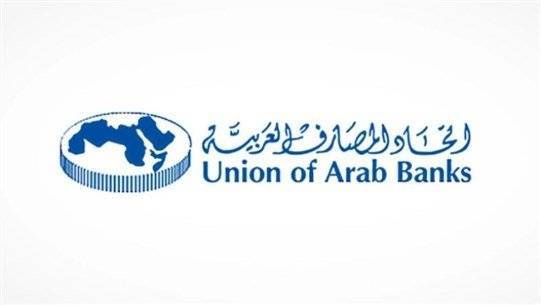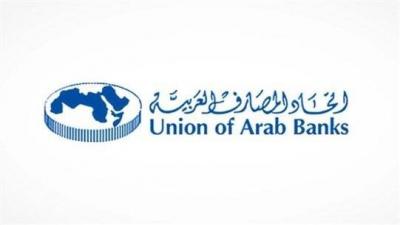The Arab Banking Union released a study on "Global Stagflation," discussing inflation accompanied by economic stagnation, reduced growth, rising prices due to production bottlenecks and supply chains (impacts of the Russian-Ukrainian war, sanctions, and other causes), and a weak economy. The Union pointed out that "international markets are currently experiencing significant inflation in the prices of raw materials and produced goods, unseen for over four decades." In its study on "Global Stagflation," it noted that "signs of inflation began to appear on the global economy in the third quarter of 2021, but its pace accelerated with the onset of the Russian-Ukrainian crisis in early 2022."
It added, "This inflation coincided with severe economic stagnation, leading to a state of uncertainty about the future, with fears of facing a 'stagflation' scenario that could severely harm the strongest global economies if it persists for an extended period." In this context, the World Bank's forecasts released last June indicated a significant reduction in future economic outlooks worldwide, predicting a sharp slowdown in global growth to 2.9% this year, down from 5.7% in 2021. This represents about a one-third reduction from January 2022 forecasts, which estimated growth at 4.1% for the mentioned year.
This significant downgrade is attributed to the sharp rise in energy and food prices, alongside disruptions in supply chains and international trade resulting from the Russian-Ukrainian crisis and the extensive sanctions imposed on Russia. The study also compared current economic conditions to those in the 1970s, during which stagflation was prevalent. According to the World Bank, recovery from stagflation in that era required sharp increases in interest rates in major advanced economies, which played a notable role in triggering a series of financial crises in emerging markets and developing economies.
Specifically, the current situation resembles the 1970s in three main aspects: 1- Ongoing supply-side disruptions fueling inflation, preceded by a long period of extremely loose monetary policy in major advanced economies. 2- The likelihood of weakening growth. 3- Vulnerabilities faced by emerging markets and developing economies regarding the necessary tightening of monetary policy to curb inflation.
On the other hand, the World Bank noted several differences from the 1970s crisis: 1- The dollar is strong today, sharply contrasting with its significant weakness in the 1970s. 2- The recorded increases in commodity prices are lower today than they were then. 3- The balance sheets of major financial institutions are generally strong. 4- Most importantly, unlike the 1970s, central banks in advanced economies and many developing economies now have clear mandates for price stability and have proven their ability to achieve their inflation targets over the past three decades.
The study addressed GDP and inflation, indicating: "In light of the tense global political, security, and economic atmosphere, the World Bank expects the slowdown in growth in advanced economies to worsen from 5.1% in 2021 to 2.6% in 2022, and to further decline to 2.2% in 2023. This largely reflects the continued reduction of support packages provided by fiscal policies and monetary policies during the COVID-19 pandemic."
For emerging markets and developing economies, growth is expected to drop from 6.6% in 2021 to 3.4% in 2022. According to the World Bank, the negative repercussions of the Russian-Ukrainian crisis will not only overshadow any near-term recovery experienced by some commodity-exporting countries due to rising energy prices but will also surpass it.
Growth estimates for 2022 have been adjusted downwards by about 70% for emerging markets and developing economies, covering most primary commodity-importing countries, in addition to 80% of low-income countries. Regarding the Middle East and North Africa, economies in the region faced losses in growth rates at the beginning of 2022 due to the prolonged COVID-19 pandemic. The Russian-Ukrainian crisis exacerbated the situation, despite varying economic impacts across the region, with oil-exporting countries experiencing notable recoveries and commodity-importing countries facing a double shock from rising food and fuel prices simultaneously.
In this context, the World Bank forecasts that the total growth rate for the Middle East and North Africa will accelerate to 5.3% in 2022 before declining to 3.6% in 2023. Among the group of Middle Eastern and North African countries, Arab countries are expected to register growth and inflation rates. Overall, the rise in oil prices and increased production have helped sustain strong growth recovery for oil-exporting countries in the region, complemented by a partial rise in food commodity prices, noting that daily oil production in the Gulf Cooperation Council countries has increased by about 3 million barrels compared to 2021.
According to World Bank forecasts, Iraq is expected to record the highest growth rate, with GDP growth projected to reach 8.8% in 2022, driven by a recovery in the oil sector with the gradual lifting of production constraints set by OPEC.
The study discussed central banks' measures to mitigate inflation risks, stating: "When inflation rates rise, central banks resort to various tools to curb inflation, with interest rates being among the most important of these tools, as inflation and interest rates tend to move in the same direction."
Changing interest rates is the primary tool used by the US Federal Reserve specifically to manage inflation, which automatically leads central banks around the world (in both advanced and developing countries) to adopt the same tool. When the Federal Reserve responds to high inflation risks by raising the federal funds rate, it increases the level of risk-free reserves in the US financial system, which in turn limits the money supply available to purchase high-risk assets (stocks, corporate bonds, etc.). Conversely, when the Federal Reserve lowers interest rates, it increases the money supply available to purchase risky assets.
An increase in interest rates indicates the likelihood of the central bank continuing to tighten monetary policy, which alleviates inflation expectations. After projections that inflation rates in the US and worldwide would reach very high levels, the Federal Reserve and global central banks—albeit at varying speeds—moved to transition from "quantitative easing," which had been established as a basis over the last ten years, to "quantitative tightening" that allows the curbing of rampant inflation and maintaining liquidity within banking systems.
The Bank of England (the British central bank) was among the first to take this step, raising the interest rate from 0.1% to 0.25% in December 2021, then to 0.5% in February, and again to 0.75% in March, before recently increasing it to 1% in May, the highest level since 2009. The Bank of England made these increases after inflation in the UK hit a 30-year high of around 7% in March 2021. In March, the Federal Reserve approved raising the federal funds rate by a quarter percentage point to 0.5%.
In the same context, during the opening of the European Central Bank's annual forum in Portugal, the President of the ECB announced that the bank's ultimate goal is to bring inflation back to a level close to 2%, while it peaked in May 2022 at over 8% in the Eurozone, which could increase further depending on ongoing developments. The ECB is poised to raise interest rates for the first time in 11 years once it concludes its debt purchases in Eurozone markets. However, it faces the dilemma that rapidly raising interest rates could plunge the Eurozone into stagnation, especially since it has already downgraded its growth forecasts for the next two years.
The increases in interest rates were not restricted to major central banks; many central banks in emerging and developing countries have followed suit, particularly Gulf central banks. The Saudi Central Bank decided to raise the repo rate by 0.5% from 1.75% to 2.25%. In the UAE, the central bank raised the key interest rate by 75 basis points. In Qatar, the central bank approved increasing the deposit interest rate by 75 basis points to 2.25%, while raising the lending rate by 50 basis points to 3.25%. It also raised the repo rate by 75 basis points to 2.50%.
The Central Bank of Bahrain increased the overnight deposit rate by 75 basis points to 2.25%. Meanwhile, the Central Bank of Kuwait raised the discount rate by a quarter percentage point to 2.25%. Egypt and Jordan both raised interest rates three times during 2022, with an increase of 3% in Egypt and 1.25% in Jordan. Tunisia raised its interest rate by 0.75%.
Regarding suggested solutions to curb inflation, the study noted: "Both the World Bank and the International Monetary Fund expect the global inflation rate to decline next year, but it is likely to remain above inflation targets in many economies worldwide. If inflation remains high, repeating decisions made during previous stagflation could lead to a severe global recession, combined with the current financial crises facing some emerging markets and developing economies.
Thus, reducing stagflation risks requires harsh measures from policymakers worldwide. In this regard, the World Bank recommended the following: confront the significant rise in oil and food prices and enhance supply of essential food and energy commodities; support social safety nets and avoid imposing export and import restrictions that exacerbate price increases; intensify international efforts to alleviate debt burdens, as debt-related risks have been severe for low-income countries even before the COVID-19 pandemic.
With rising debt levels extending to middle-income countries, the risks facing the global economy will grow in the absence of swift, comprehensive, and significant debt relief efforts. The International Monetary Fund also called for addressing labor market issues by lifting pandemic restrictions and incentivizing firms to increase wages, while also addressing vulnerabilities in supply chains, and central banks must respond by taking anti-inflation measures. The World Economic Forum urged the adoption of reform measures that contribute to reducing inflation, such as pressuring companies not to speculate and hoard goods, facilitating business for producers, and keeping trade corridors open."
Finally, it concluded: "Based on the above, the duration of the current stagflation depends on two key factors. First, the interaction between persistent tight conditions in labor markets and supply chain bottlenecks and the nature of central banks' response to high inflation rates through interest rate hikes, which they have adopted as a key weapon against inflation. Second, the duration of the Russian-Ukrainian crisis and its repercussions on energy prices, food supplies, and global growth. It is important to note that based on past experiences, this inflationary surge would not last more than two years, but this assessment could be erroneous if unexpected crises emerge."




